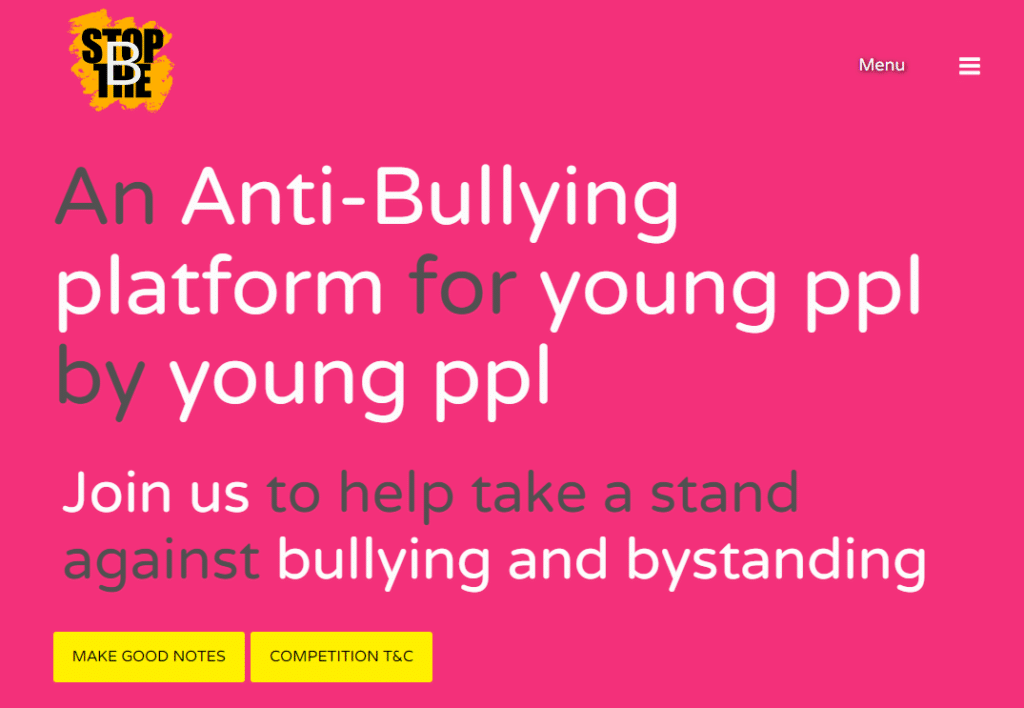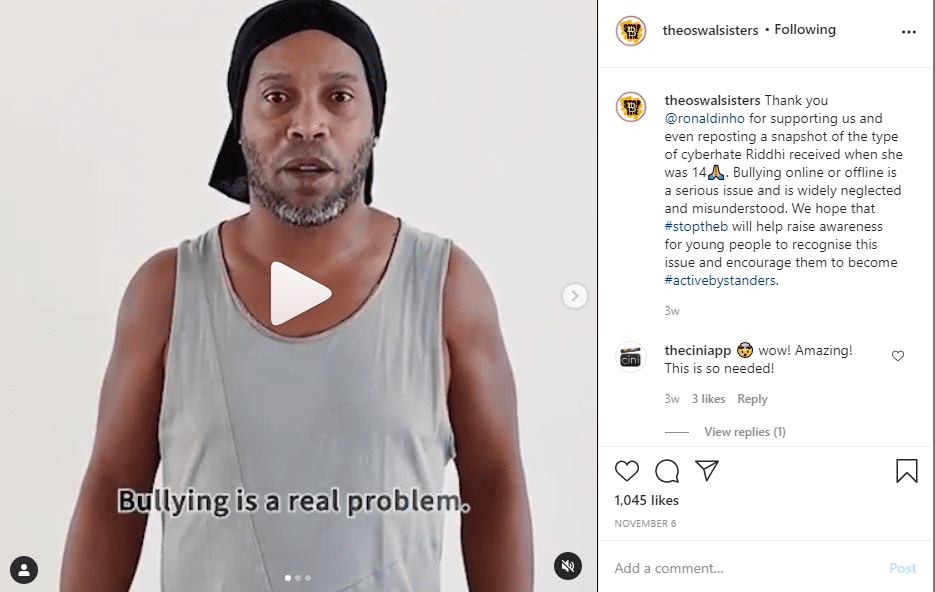This study examines the relationship between the personality construct empathy and two forms of antisocial behaviour, namely self-reported offending and school bullying. This study reviews the empirical evidence for the widely held theoretical belief that low empathy is related to antisocial behaviour by undertaking a systematic review and meta-analysis. In order to develop a better understanding of the relationship between empathy and different forms of antisocial behaviour, an anonymous questionnaire was administered to a group of 720 Year 10 students in England. Information about empathy, self-reported offending and bullying was collected. Information about additional factors, which previous research has found to be related to both offending and bullying (such as impulsivity, parental supervision and low socioeconomic status), was also collected. The key question for the offending component of this study was: was low empathy related to self-reported offending? Furthermore, if differences were found to exist, were they independent of the associations between offending and the other variables which previous research has established to be related to offending? The results suggest that empathy was associated with some forms of self-reported offending, but not others. The association between empathy and offending also differed for males and females, and also the frequency of offending. The implications for interventions to reduce offending are discussed. Although similar to offending in some respects, bullying in school is a different form of antisocial behaviour. The key question of the bullying component of this study was: was low empathy related to bullying others? Also, if differences were found to exist, were they independent of the associations between bullying and the other variables which previous research has established to be related to bullying? The results suggest that empathy was related to bullying for females and for more serious bullying among males. Differences also existed for different types of bullying. The implications of these findings for the development of strategies to address bullying behaviour are discussed.
Search Results for “Efficient 300-740 Flexible Learning Mode | 300-740 100% Free PDF Download 🥏 Copy URL 「 www.pdfvce.com 」 open and search for ➤ 300-740 ⮘ to download for free 🤬Valid 300-740 Mock Test”
Abuse and harm to individuals, through harassment and bullying, coexist with Identity Theft as criminal behaviours supported by the ready availability of personal information. Incorporating privacy protection measures into software design requires a thorough understanding about how an individual’s privacy is affected by Internet technologies. This research set out to incorporate such an understanding by examining privacy risks for two groups of individuals, for whom privacy was an important issue, domestic abuse survivors and teenagers. The purpose was to examine the reality of the privacy risks for these two groups. This research combined a number of approaches underpinned by a selection of foundation theories from four separate domains: software engineering; information systems; social science; and criminal behaviour. Semi-structured interviews, focus groups, workshops and questionnaires gathered information from managers of refuges and outreach workers from Women’s Aid; representatives from probation and police domestic violence units; and teenagers. The findings from these first interactions provided specific examples of risks posed to the two groups. These findings demonstrated that there was a need for a selection of protection mechanisms that promoted awareness of the potential risk among vulnerable individuals. Emerging from these findings were a set of concepts that formed the basis of a novel taxonomy of threat framework designed to assist in risk assessment. To demonstrate the crossover between understanding the social environment and the use of technology, the taxonomy of threat was incorporated into a novel Vulnerability Assessment Framework, which in turn provided a basis for an extension to standard browser technology. A proof-of-concept prototype was implemented by creating an Internet Explorer 7.0 browser helper object. The prototype also made use of the Semantic Web protocols of Resource Description Framework and the Web Ontology Language for simple data storage and reasoning. The purpose of this combination was to demonstrate how the environment in which the individual primarily interacted with the Internet could be adapted to provide awareness of the potential risk, and to enable the individual to take steps to reduce that risk. Representatives of the user-groups were consulted for evaluation of the acceptability of the prototype approach. The favourable ratings given by the respondents demonstrated the acceptability of such an approach to monitoring personal information, with the provision that control remained with the individual. The evaluation exercise also demonstrated how the prototype would serve as a useful tool to make individuals aware of the dangers. The novel contribution of this research contains four facets: it advances understanding of privacy protection for the individual; illustrates an effective combination of methodology frameworks to address the complex issue of privacy; provides a framework for risk assessment through the taxonomy of threat; and demonstrates the novel vulnerability assessment framework through a proof-of-concept prototype.
This participatory action research (PAR) project explored the factors causing stress in the apparel industry of Sri Lanka, its impact and the coping methodologies adopted by the workers. The PAR team was made of 25 voluntary workers from the apparel industry of Sri Lanka. During the group discussions held, the possible causes for stress, coping strategies used and implications of stress on job satisfaction and intention to leave were discussed, debated, and critiqued. The research used a modified version of the Occupational Stress Indicator (Cooper et al., 1998) and Pressure Management Indicator (PMI) developed by Williams and Cooper (1996) to collect stress related information from 155 workers from different apparel factories. Financial difficulties, abusive supervision and workplace incivility, workload were identified as the main factors causing stress in the apparel industry. The researcher’s role as an insider as well as an outsider to the community and shifting positions from an outside consultant/researcher to an active role were important aspects of the data interpretation. The importance attributed to the participants lived experience, focus on social justice and emancipation were inherent characteristics of PAR. Complementary behaviour and religious support were the categories of most commonly used coping strategies by the factory workers. The relationship with others and the recognition were important factors predicting the job satisfaction. Only the ‘workload’ factor could predict intention to leave among apparel factory workers. The implications of the research suggest the importance in the culture and local context on causes and coping strategies on stress. It added abusive supervision and workplace incivility as a key factor causing stress. The impact of the culture was evident as religious support and complementary behaviour were the main categories of coping strategies.
The project aims at finding how workplace bullying affects employee productivity and performance at Ireland organizations. For that reason, quantitative research methods were employed and survey was distributed to companies, nurnsing homes, universities and posted in social media. It also finds out the impact of bullying on employee job satisfaction and productivity. The most appropriate method for the study is quantitative research design in which variables have been measured. The quantitative research design is helpful in attaining information in a numeric way, by applying this method, the variables and their relationships are being attained The analysis depicted that due to workplace bullying, the target experiences low productivity, high mental and physical stress which ultimately leads to less job satisfaction. If organizational culture and environment do not restrict such behavior, which causes bullying incidents within the company, then company may face long-term financial losses. Thus, it has been proven that negative working environment lead towards decreasing employee productivity. The correlation analysis further depicted that aggressive behavior has an impact on employee job satisfaction. The findings of the project concluded that, workplace bullying directly affect employee productivity and performance.
Cyberbullying is a relatively recent phenomenon originally coming to the forefront of the public agenda following a number of anecdotal accounts. It has been defined as “any behaviour performed through electronic or digital media by individuals or groups that repeatedly communicates hostile or aggressive messages intended to inflict harm or discomfort on others” (Tokunaga, 2010: 278). This study is designed to explore cyberbullying issues in school settings from the perspective of teaching professionals. This area is of consequence given that research focussing on face-to-face bullying has suggested that teaching professionals and school staff can have differing definitions and understandings of bullying behaviour and the high prevalence of unreported cyberbullying in schools. The participants in this research were Anti-Bullying Co-ordinators in eight schools in one Local Authority. The staff who participated were employed in a range of settings (Primary, Secondary, Middle and High schools). The views of teaching professionals were obtained using semi-structured interviews and the data were analysed using Thematic Analysis (Braun and Clarke, 2006). The results indicate that teaching professionals are beginning to develop an understanding of issues relating to cyberbullying and acknowledge the unique features of this type of behaviour. The findings also highlight that consideration has been given to the level of involvement schools should have when dealing with cyberbullying issues. Furthermore schools are aware of the impact of this type of behaviour and have employed a range of methods to prevent and intervene in cyberbullying. However schools still require additional support to understand how to respond to this phenomenon more comprehensively.
This thesis investigates gendered power relations, including violence, control and coercion, within teenage heterosexual relationships, and broader relationship cultures. It focusses on upper-middle class 14-16 year olds, whose sexualities – unlike those of working-class teenagers – are seldom seen as a social problem. It explores the interactions of romantic and sexual experiences with classed identities and social contexts, based on data generated within a large, high-performing state comprehensive in an affluent, ethnically homogenous (white) area of south-east England. The research, conducted in and outside school, used a mixed-methods approach, incorporating in-depth individual and paired interviews, and self-completion questionnaires. It draws on insights from feminist post-structural approaches to gender and sexualities, and is situated in relation to work that explores the negotiation of gender in “post-feminist” neoliberal societies. Despite (in some ways, because of) their privileged class positioning, these young people faced conflicting regulatory discourses. Heteronormative discourses, and gendered double standards, still shaped their (sexual) subjectivities. Sexuality was very public and visible, forming a claustrophobic regulatory framework restricting movements and choices, particularly girls’. But inequalities and violences were often obscured by powerful classed discourses of compulsory individuality, with young people compelled to perform an autonomous self even as they negotiated inescapably social networks of sexuality. These discourses could exacerbate inequalities, as participants denigrated others for vulnerability. A significant proportion of participants reported controlling, coercive or violent relationship experiences, but girls especially downplayed their importance. Girls shouldered the burden of emotion work, taking on responsibility for both their own and partners’ emotions. Sexual harassment and violence from peers were often regarded with resignation, and sometimes led to further victimisation from partners or peers. Policing of sexuality was bound up with classed prejudices and assumptions; participants’ performances of identity often rested on dissociation from the working class. Young middle-class people’s heterosexual subjectivities sat uneasily with educationally successful, future-oriented subjectivities; sexuality was an ever-lurking threat to becoming an educational and therefore classed success.
Recently, I have become aware of a cool new global initiative called StopTheB. It is for young people, by young people – and was founded by two sisters, Vasundhara (22) and Riddhi Oswal (16). The main aim of StopTheB is not only to raise awareness and educate on the issues, context, and dynamics of bullying and bystanding behaviors, but more importantly to inspire individuals to rise up, support targets, intervene when they feel comfortable, and otherwise simply do the kind thing. We know that youth can be powerful engines for positive change in schools and in communities, and their voices and efforts must be encouraged and elevated at all times.
Youth can be powerful engines for positive change in schools and in communities, and their voices and efforts must be encouraged and elevated at all times.

The campaign has received a tremendous amount of international support, and has been featured in a number of major outlets including Business Insider, Yahoo News, Daily Herald, Star Tribune, Boston Herald Le Digest Quotidien, Actus France, Asia One, Singapore News, Thailand Tribune, Thailand News Gazette, Brunei News Gazette, The Daily Courier, Ottawa Citizen, and Canadian Insider. It’s even been promoted by celebrities, including soccer legend Ronaldinho:

Over the last few months, Vasundhara and Riddhi have been launching “challenges” to encourage and motivate young people to get involved not just with their words, but with their actions. For example, on their Instagram page, they’ve asked their growing community to post digital creations and artwork that represents what it means to be an #activebystander – and the top entries received cash prizes.

Make Good Challenge
What I wanted to bring to your attention – and the attention of your students (spread the word!) is the newest #StopTheB challenge, called “Make Good.” The Make Good Challenge was launched on UNESCO’s inaugural ‘International Day against Violence and Bullying at School Including Cyberbullying’ – November 5th. Basically, it asks young people to reflect on a past situation in which a fellow classmate or student was being bullied (at school, in the community, or online), and the participant failed to say or do the right thing and, in retrospect, wished they had acted differently. Perhaps they didn’t stand up for the victim at the time, but know deep inside now that they really should have. Perhaps they wanted to, but didn’t exactly know what to do, or lacked the courage, or were friends with those who were doing the bullying, and were afraid of being targeted next. Perhaps they simply lacked empathy and understanding in the moment. Or, perhaps they themselves were the aggressor. This is their opportunity to make things right!
How To Participate
Any student across the globe can participate in the Make Good Challenge. All they have to do is go to the StopTheB website, choose from one of the custom Make Good note templates, write a message to the person with whom they want to make things right, and send it to them through the cool, interactive interface! Participants can also choose to create their own video (one minute or less in duration) and post it to their Instagram page while also tagging @StopTheB and the person to whom they want to apologize.

How Your School Can Be A Part
Educators (and other youth professionals), consider sharing this blog, the StopTheB website, and the image above to get the word out to your students. And follow the StopTheB page on Instagram! Let others know, so they can participate! The last date of entry is December 10th, and two winners will be announced on December 24th. Vasundhara and Riddhi are looking for the most genuine and courageous apologies, and so do keep that in mind when you mention this to your students. Those two winners will receive up to 50% of their tuition fee (capped at $10,000 USD due to global disparity in tuition rates). (Check out the Terms and Conditions to have any of your questions answered).

The Power of An Apology
So many times, we have regrets about how we’ve treated others, or about not stepping up to help, encourage, or support others when we really should have. This is a chance to restore a relationship, to shed any feelings of guilt, to get past any residual shame, and to move forward with the power to do the right thing next time. If students never take the first step to address an instance of social and relational conflict, they will continue to run from those awkward and uncomfortable moments, instead of acting in strength, confidence, and maturity. This can be that first step, which can lead to another, and another – and ultimately a lifestyle where the student not only knows what to do when they mess up, but actually does it.
If students never take the first step to address an instance of social and relational conflict, they will continue to run from those awkward and uncomfortable moments, instead of acting in strength, confidence, and maturity.
Finally, I think we all understand the power of an apology when it comes to helping the target heal and recover. Some apologies are simple and just a few words – but those aren’t very effective. Since research has shown that the more elaborate apologies lead to more forgiveness, I appreciate the nuances of the Make Good Challenge. A participant must really think through and reflect on what has happened in the past between them and another individual, and then meaningfully determine what words to use to restore the relationship. Just saying “I’m sorry!” won’t be enough. Often, the person you have hurt needs more – and needs to see that you are truly remorseful.
Again, please let your students know about this challenge and encourage them to participate! I’ll be helping serve as a guest judge, and very much look forward to the opportunity. It just starts with a singular positive action, and that can catalyze a chain reaction that collectively lead to better, healthier relationships among youth!
By Dr Sameer Hinduja
In his address, Prof. O’Higgins Norman outlined the “inclusive definition” of school bullying which has been developed by UNESCO and the World Anti-Bullying Forum.
He also introduced members of the working group to UNESCO’s Whole Education Approach and how it can be used to tackle bullying in schools.
Prof. O’Higgins Norman argued that through the implementation of the Whole Education Approach a more caring climate can be promoted and bullying reduced in schools.